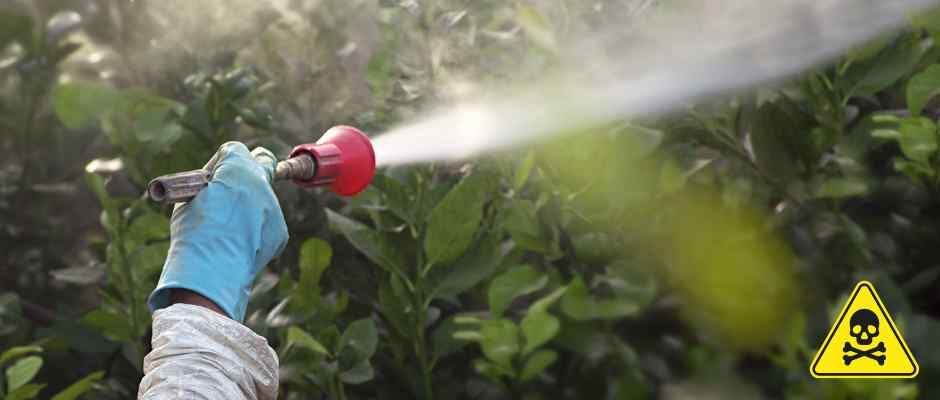
Email: jberger@ertitraining.com
Phone: 541-740-4241
The Five Most Important Hazmat Dangers of Pesticides: What You Need to Know
Understanding the potential dangers associated with pesticide use is essential for professionals who work with these substances daily.

Pesticides play a critical role in agriculture, landscaping, and lawn care, helping to manage pests that can damage crops, plants, and green spaces. However, as beneficial as these chemicals can be, they also pose significant hazards that must be managed carefully. Understanding the potential dangers associated with pesticide use is essential for park workers, farmers, growers, landscapers, and lawncare professionals who work with these substances daily.
In this blog post, we will explore the five most important Hazmat dangers of pesticides and provide practical tips for mitigating these risks to ensure a safer working environment.
1. Toxicity to Human Health
One of the most immediate concerns when dealing with pesticides is their toxicity to human health. Different pesticides have varying levels of toxicity, but all can pose serious health risks if not handled correctly. Acute exposure can lead to symptoms such as skin irritations, respiratory problems, nausea, headaches, and even more severe conditions like poisoning.
Tips for Minimizing Risk:
- Personal Protective Equipment (PPE): Always wear appropriate PPE, such as gloves, masks, goggles, and long-sleeved clothing, to minimize direct contact with pesticides.
- Training: Ensure that all workers are adequately trained in the safe handling, application, and disposal of pesticides.
- Emergency Procedures: Establish clear emergency procedures and ensure that all workers know how to respond if exposure occurs.
2. Environmental Contamination
Pesticides can have detrimental effects on the environment if they are not used and disposed of properly. Runoff from treated areas can contaminate water sources, affecting aquatic life and potentially entering the human water supply. Additionally, pesticides can impact non-target species, including beneficial insects, birds, and other wildlife.
Tips for Minimizing Risk:
- Application Guidelines: Follow manufacturer guidelines for application rates and methods to ensure minimal environmental impact.
- Buffer Zones: Implement buffer zones around water bodies and sensitive habitats to prevent contamination.
- Integrated Pest Management (IPM): Use IPM strategies to reduce reliance on chemical pesticides, incorporating biological control methods and other non-chemical approaches.
3. Chemical Residue on Crops and Plants
For farmers and growers, the presence of chemical residues on crops is a significant concern. These residues can affect the safety and marketability of produce, leading to potential health risks for consumers and financial losses for producers.
Tips for Minimizing Risk:
- Pre-Harvest Intervals: Adhere to recommended pre-harvest intervals (PHIs) to ensure that pesticide residues have degraded to safe levels before harvesting.
- Pesticide Rotation: Rotate between different classes of pesticides to prevent the buildup of residues and reduce the risk of pest resistance.
- Regular Testing: Conduct regular residue testing on crops to ensure compliance with safety standards and regulations.
4. Fire and Explosion Hazards
Many pesticides are flammable and can pose fire and explosion hazards, particularly when stored in large quantities or mixed with other chemicals. Improper storage and handling can lead to dangerous situations, putting workers and property at risk.
Tips for Minimizing Risk:
- Proper Storage: Store pesticides in cool, dry, well-ventilated areas away from sources of heat and ignition. Use designated storage facilities that comply with safety regulations.
- Labeling and Segregation: Clearly label all pesticide containers and store them separately from other chemicals to prevent dangerous reactions.
- Safety Inspections: Conduct regular safety inspections and maintain fire extinguishers and other emergency equipment in pesticide storage areas.
5. Chronic Exposure and Long-Term Health Effects
Chronic exposure to pesticides can lead to long-term health effects, including respiratory diseases, neurological disorders, and certain types of cancer. Workers who are frequently exposed to pesticides over extended periods are particularly at risk.
Tips for Minimizing Risk:
- Exposure Monitoring: Implement exposure monitoring programs to track and limit the amount of pesticide exposure workers experience over time.
- Health Screenings: Provide regular health screenings and medical check-ups for workers to detect and address any early signs of health issues related to pesticide exposure.
- Education and Awareness: Educate workers about the potential long-term health risks of pesticide exposure and encourage the use of protective measures consistently.
Conclusion
While pesticides are valuable tools for managing pests and maintaining healthy crops and landscapes, they come with significant hazards that must be carefully managed. By understanding the five most important Hazmat dangers of pesticides—toxicity to human health, environmental contamination, chemical residue on crops, fire and explosion hazards, and chronic exposure—park workers, farmers, growers, landscapers, and lawncare professionals can take proactive steps to protect themselves, the environment, and the communities they serve.
Implementing safety measures, providing proper training, and staying informed about best practices are essential for mitigating the risks associated with pesticide use. By prioritizing safety and responsibility, we can continue to benefit from the advantages of pesticides while minimizing their potential dangers.
Stay safe and informed, and don’t hesitate to reach out to industry experts for additional guidance and support in your pesticide management efforts.









